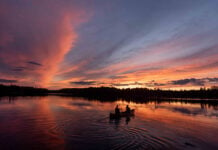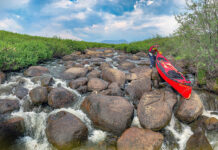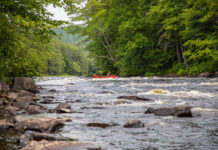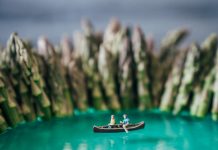It was cloudy as I drove through the Southwest, jolting around my truck as it shook over the rugged road I’d picked off a map, the most remote trail I could find heading in towards the canyon.
Leaving the vehicle behind in favor of 30 miles by foot, I hiked until what I saw left my breath in my throat. A 270-degree vista of reds, yellows and blues stretched for hundreds of miles, with the Colorado River cutting through the Grand Canyon 5,000 feet below.
I have been hunting lightning with my camera for four years now, returning every monsoon season to the spot that sparked my love affair with this landscape.
The trick to capturing these storms, I have learned, is being patient, prepared and crossing my fingers for good luck.
On this day, I was sitting over a sheer drop with my girlfriend, watching the clouds dissipate down to nothing as the sun set, feeling another monsoon season going down the drain. After weeks of planning, tracking and learning the patterns of the storm systems, I had nothing.
Then, just after nightfall, BOOM! Blood flooded my brain.
A series of electrical storms built and hit out of nowhere. The density of lightning was something I didn’t even know could happen. For a period of two hours, from 11 p.m. until one in the morning, three surrounding storms unleashed a bolt every second, an endless atmospheric strobe. The thunder was constant and deafening.
Making split second decisions with my camera, there were times I forgot to breathe I was so excited and focused.
The bolts were so bright that in order to expose them properly, I had no information on the surrounding landscape and night sky. With trepidation, I gave up a few bolts by overexposing the lightning to register the land. There was no way of knowing when the perfect bolt would strike and, indeed, some of the night’s best lightning occurred while I was exposed for the land.
In the instant this bolt struck, I clutched my camera and took a deep breath—I had captured the storm, both the desert’s lifeblood and a violent expression of its unforgiving nature.









